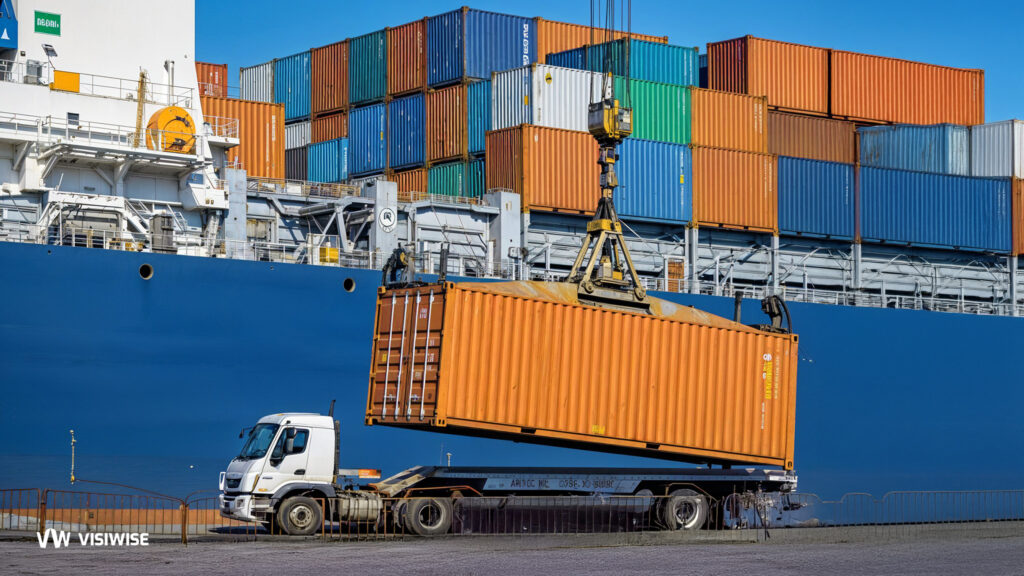The United States, with its vast network of ports, plays a crucial role in global trade. From bustling cargo ports on the West Coast to major shipping hubs along the Gulf and East Coasts, these facilities are vital to the economy. Here’s a comprehensive look at the most prominent ports in the U.S., their functions, and their impacts.
How Many Major Ports Are There in the USA?
The United States boasts hundreds of ports, but around 20 are recognized as major ports due to their large cargo volumes and economic significance. These major ports handle the bulk of international trade and are strategically positioned along the coasts and rivers to serve different regions.
What is the Busiest U.S. Port of Entry?
The Port of Los Angeles holds the title as the busiest port of entry in the United States. Known as "America’s Port," it handles about 20% of all U.S. imports. This volume places it as the largest port in North America by container throughput, a crucial point for Asian imports.
What is the Busiest Port in North America?
The Port of Los Angeles also takes the title of the busiest port in North America, processing over 10 million TEUs (twenty-foot equivalent units) annually. This port is a vital gateway for goods traveling to and from Asia and continues to grow its capacity and infrastructure.
What is the Most Famous Port in the United States?
The Port of New York and New Jersey, often highlighted due to its historical and economic significance, is among the most famous U.S. ports. As the largest port on the East Coast, it serves as a key trading hub and connects the U.S. to Europe and beyond.
What Are the 5 Largest Ports in the US?
The five largest ports in the U.S. by cargo volume are:
- Port of Los Angeles, California – Handles over 10 million TEUs annually.
- Port of New York and New Jersey – Manages around 7.4 million TEUs per year.
- Port of Long Beach, California – Neighbor to the Port of Los Angeles, processing 9.13 million TEUs.
- Port of Savannah, Georgia – The largest single-terminal container port in North America, with 5.76 million TEUs.
- Port of Houston, Texas – A major port on the Gulf Coast, handling 1.6 million TEUs with a focus on petroleum.
Which State Has the Most Major Ports?
California stands out for its extensive port network, including the Port of Los Angeles, Port of Long Beach, and Port of Oakland, among others. Texas and Florida also host multiple major ports, essential for trade within the Gulf of Mexico and Atlantic routes.
Which U.S. Ports Are Most Congested?
Ports in California, especially the Ports of Los Angeles and Long Beach, frequently face congestion due to their high volume and strategic location for Asian trade. Efforts are underway to improve efficiency and reduce bottlenecks through technological and infrastructure upgrades.
What is the Biggest Port in the World?
The Port of Shanghai in China is currently the largest port in the world by container volume. It handles over 43 million TEUs annually, significantly more than any U.S. port.
What is the Biggest U.S. Border Crossing?
The Laredo Port of Entry in Texas is the busiest land border crossing in the U.S., facilitating a large amount of trade between the United States and Mexico.
What is the Oldest Port in the United States?
The Port of Boston is considered one of the oldest in the U.S., with a history dating back to the 1600s. It remains active today, handling a variety of cargo types and continuing to serve as a key maritime entry point.
What is the Largest Inland Port in the United States?
The Port of South Louisiana, located along the Mississippi River, is the largest inland port by tonnage. It spans over 50 miles and is crucial for agricultural exports from the Midwest.
What is the Main Port on the East Coast?
The Port of New York and New Jersey is the principal port on the East Coast. It is a major center for containerized cargo, handling goods from Europe, Asia, and beyond.
What is the Famous Port in Florida?
The Port of Miami, often called the "Cruise Capital of the World," is well-known for its extensive cruise operations. It also handles a significant amount of cargo, making it a key player in trade with Latin America.
What is the Famous California Port?
The Port of Los Angeles is the most famous port in California, due to its massive cargo volume and status as a central trade hub for the Pacific.
What Port City Was Important to America?
New Orleans historically held a significant role in American trade, especially during the 19th century. Positioned along the Mississippi River, it facilitated trade between the Gulf of Mexico and the Midwest.
List of Top 10 Biggest Sea Ports in the USA
- Port of Los Angeles, California
Often called “America’s Port,” the Port of Los Angeles is the largest in North America, handling around 20% of U.S. cargo imports. Spanning 7,500 acres and housing 25 cargo terminals, this port supports major trade with countries like China, Japan, and South Korea.- Container Volume: 10.66 million TEUs
- Cargo Tonnage: 222 million metric tons
- Employment Impact: 1.6 million jobs
- Total Vessels Handled: 1,867
- Port of New York and New Jersey
As the largest port on the East Coast, this port manages a diverse array of cargo, helping drive the economy in the region. It operates several terminals, including the Port Authority Marine Terminal, and processes goods from top trading partners like China, India, and Germany.- Container Volume: 7.4 million TEUs
- Annual Cargo Value: $205 billion
- Annual Cargo Tonnage: 74 million metric tons
- Port of Long Beach, California
Situated next to Los Angeles, the Port of Long Beach is a major trade hub, especially with Asian markets. Recognized for its commitment to environmental initiatives, the port processes millions of TEUs annually.- Container Volume: 9.13 million TEUs
- Cargo Tonnage: 78.2 million metric tons
- Berths: 80
- Employment Impact: 370,000 jobs
- Port of Savannah, Georgia
Home to North America’s largest single-terminal container facility, the Port of Savannah plays a key role in handling heavy goods, such as automobiles, machinery, and agriculture products.- Container Volume: 5.76 million TEUs
- Key Facilities: Garden City Terminal and Ocean Terminal
- Port of Houston, Texas
As the busiest port for foreign tonnage in the U.S., Houston’s port fuels the Gulf Coast economy with a focus on oil and petroleum products. Its vast network of terminals supports both domestic and international trade.- Vessel Calls: 8,200 annually
- Cargo Tonnage: 247 million metric tons
- Barges Managed: 215,000 annually
- Economic Impact: $339 billion
- Port of Charleston, South Carolina
Known for operational efficiency and a commitment to environmental sustainability, the Port of Charleston is a southern trade hub that supports substantial economic activity and infrastructure growth.- Container Volume: 2.79 million TEUs
- Economic Impact: Over $17 billion
- New Terminal: The Hugh K. Leatherman Terminal
- Port of Oakland, California
Serving as a vital link with Asia, the Port of Oakland continually invests in infrastructure to accommodate larger vessels and enhance sustainability efforts.- Container Volume: 2.34 million TEUs
- Environmental Initiatives: Truck management program to reduce emissions
- Port of Miami, Florida
Known as the world’s largest cruise port, the Port of Miami also handles a wide range of cargo. Recent enhancements, like the Deep Dredge Project, have significantly improved its capacity for handling larger vessels.- Container Volume: 1.2 million TEUs
- Annual Revenue Impact: Over $41 billion
- Port of Tacoma, Washington
Part of the Northwest Seaport Alliance with Seattle, the Port of Tacoma is a critical West Coast facility, supporting international trade with its extensive container processing capabilities.- Container Volume: Around 2.1 million TEUs
- Trade Partner: Strong focus on Asian trade
- Port of Virginia (Norfolk), Virginia
With deepwater capabilities and easy access to major East Coast and Midwest markets, the Port of Virginia is a major gateway for U.S. trade.- Container Volume: Approximately 3.4 million TEUs
- Role: Key distribution hub for the East Coast
These ports are essential to U.S. trade and economic stability, facilitating global commerce and supporting the logistics network that powers the nation’s economy.
Significance of the Busiest Sea Ports in the U.S.
These ports serve as the heartbeat of American trade, connecting the country to global markets and facilitating immense volumes of goods. Each port’s infrastructure investments, strategic position, and innovation enhance the United States’ competitiveness in international commerce. U.S. ports support economic growth, sustain millions of jobs, and ensure a steady flow of goods essential to daily life and industrial operations.
Sea ports also contribute to national security, acting as controlled entry points for monitoring imports and exports. Their roles in trade, logistics, and commerce make them indispensable to the U.S.



